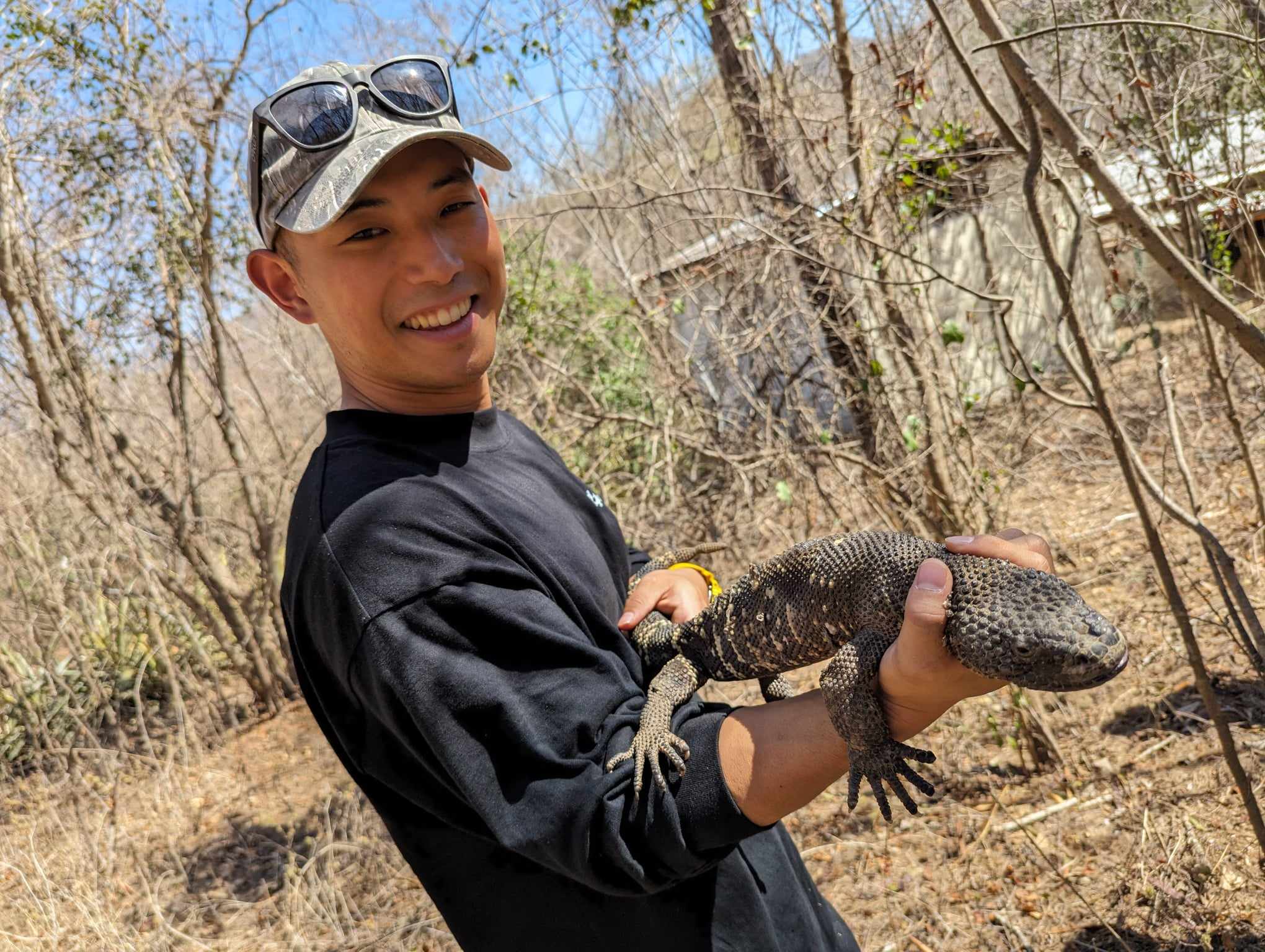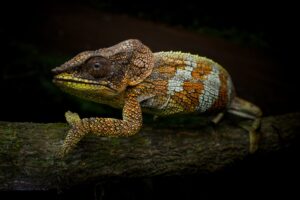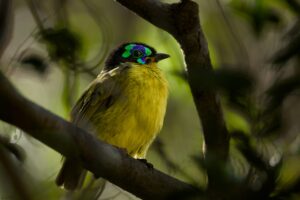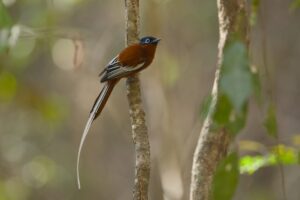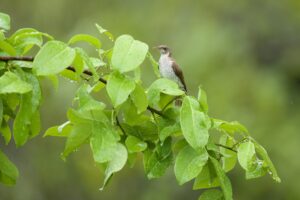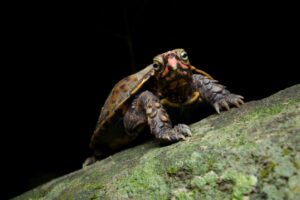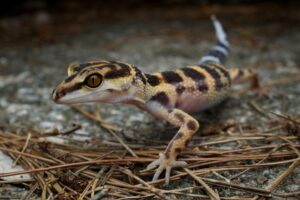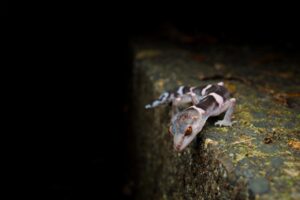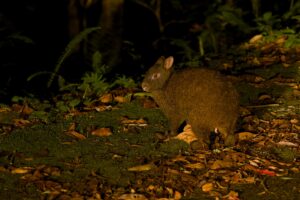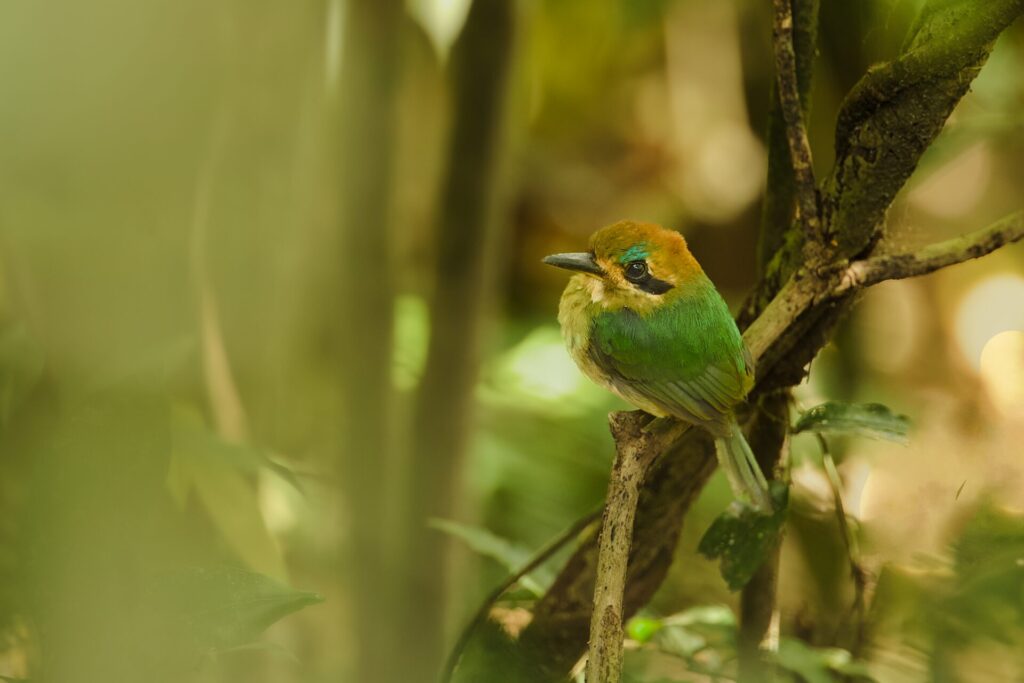
Introduction: What is the Tody Motmot?
The Tody Motmot (scientific name: Hylomanes momotula) is the smallest bird in the Motmot family, known for its adorable appearance and vibrant colors. As the smallest member of the Motmot family, it quietly inhabits the tropical rainforests. Recently, I had the opportunity to observe it in Panama, and I’d like to share my findings with you.
Characteristics of the Tody Motmot
The Tody Motmot measures only 16.5 to 18.0 cm in length and weighs 27 to 33 grams for males and 25 to 30 grams for females, making it an exceptionally small bird. It features a green crown, a rufous neck, and striking blue supercilia. The black facial mask with a white stripe on its face makes it stand out. The tail is much shorter than other Motmots and lacks the characteristic “racket-like” tips, giving it a more straightforward shape. In the past, it was suggested that the Tody Motmot wasn’t part of the Motmot family because of its tail shape. However, it has been observed that it moves its tail sideways in a characteristic manner, which confirmed its affiliation with the Motmot family.
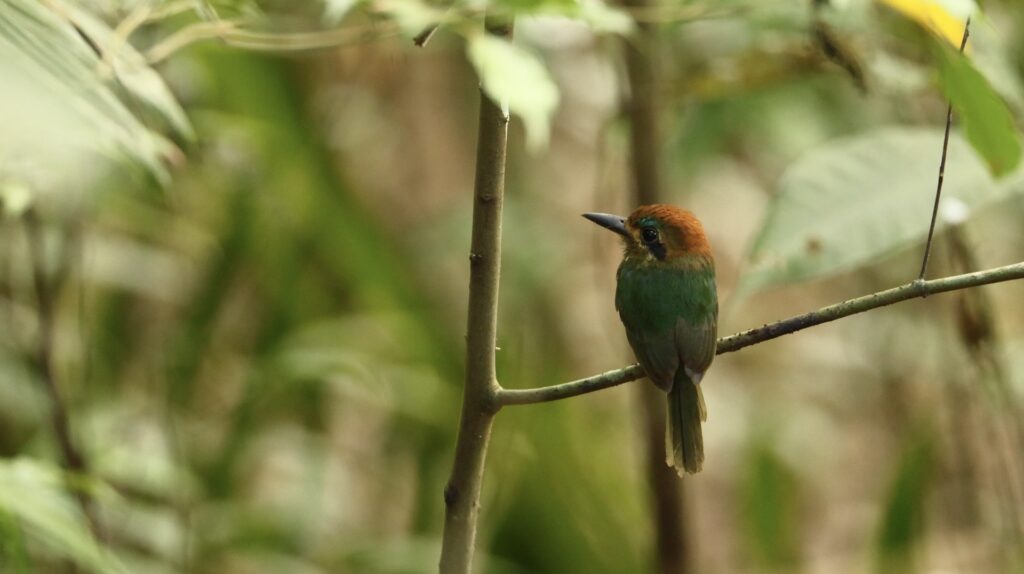
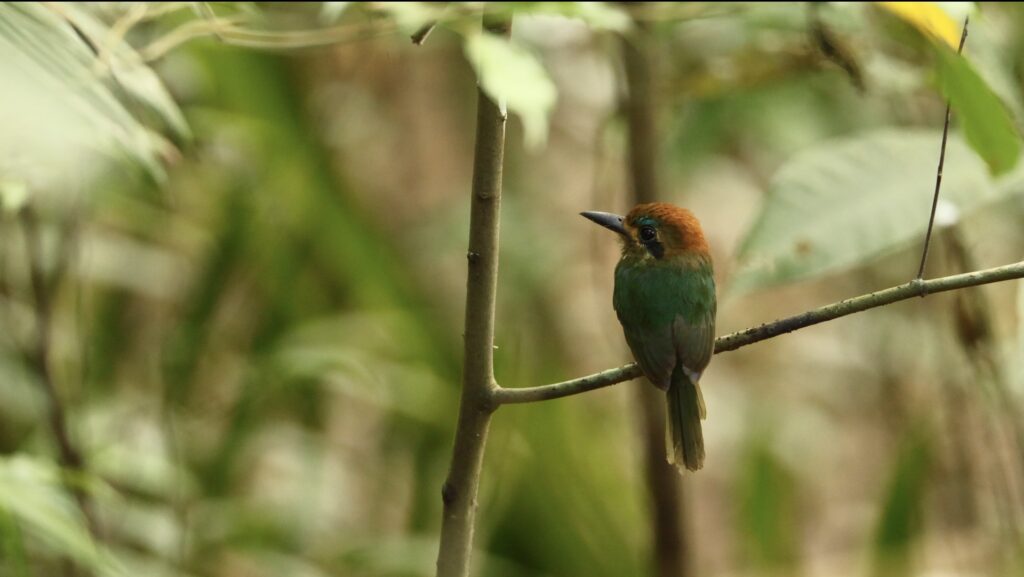
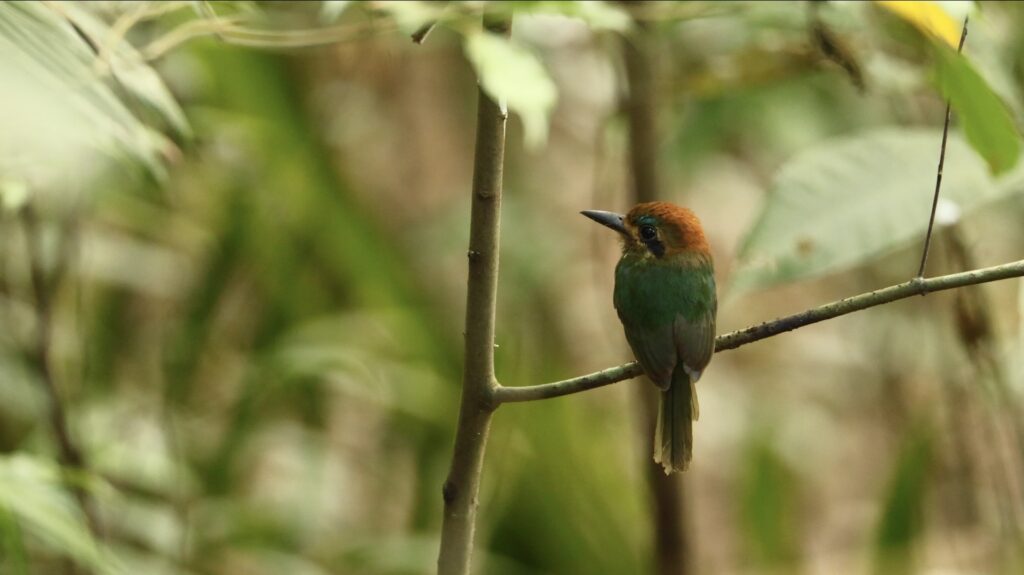
Habitat and Distribution of the Tody Motmot
The Tody Motmot is found from southern Mexico to Central America and as far as Colombia. It inhabits humid evergreen forests and ravine areas, with its range extending through Belize, Colombia, Costa Rica, El Salvador, Guatemala, Honduras, Mexico, Nicaragua, and Panama. This bird prefers the forest understory, where it camouflages its small size while living in the dense tropical rainforest.
Diet and Behavior of the Tody Motmot
The Tody Motmot primarily feeds on insects, spiders, and snails. It hunts by flying out from foliage and catching prey, and it is also skilled at capturing butterflies and dragonflies mid-flight. Unlike other Motmots, it does not commonly eat fruit. Its unique diet sets it apart from other members of the Motmot family.
Calls and Breeding of the Tody Motmot
The Tody Motmot’s calls are characterized by a distinctive, resonant sound, such as “kwa-kwa-kwa-kwa” or “whoop!” Regarding breeding, adult birds have been observed carrying food in June, and fledglings have been seen with adults in early July. However, the exact location of its nest remains a mystery.
Conservation Status of the Tody Motmot
Currently, the Tody Motmot is classified as “Least Concern” by the International Union for Conservation of Nature (IUCN). While its population is fragmented and there are some rare individuals, it does not face significant threats at present. However, due to its small size and limited habitat, observing it in the wild remains a rare and difficult experience.
How to Spot a Tody Motmot
The Tody Motmot, with its small body and vibrant colors, is a beautiful and hidden gem of the tropical rainforest. If you get a chance to spot one of these birds in the jungle, you’re sure to fall in love with its charm.


